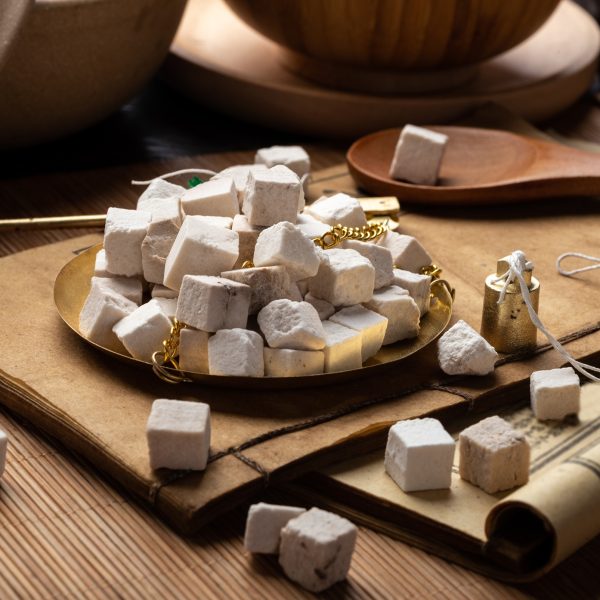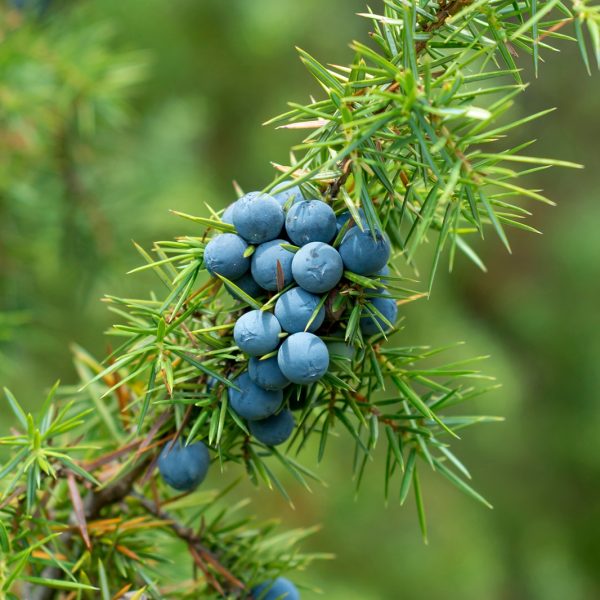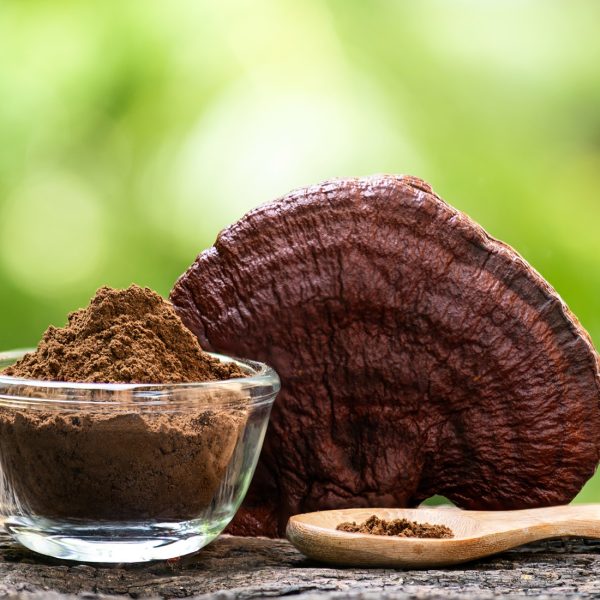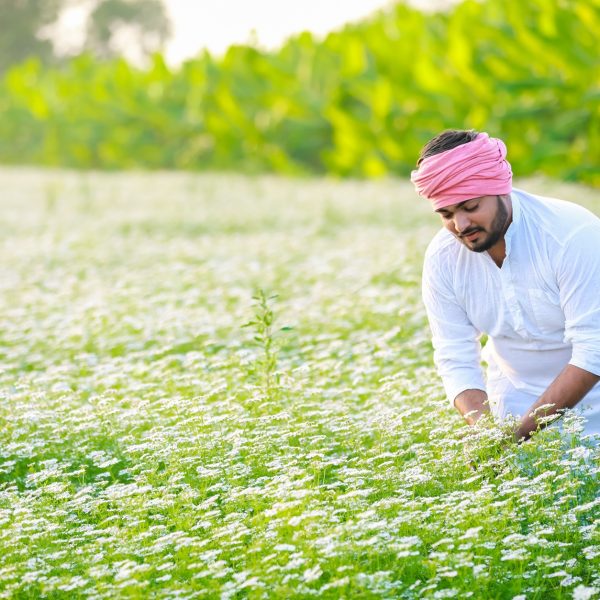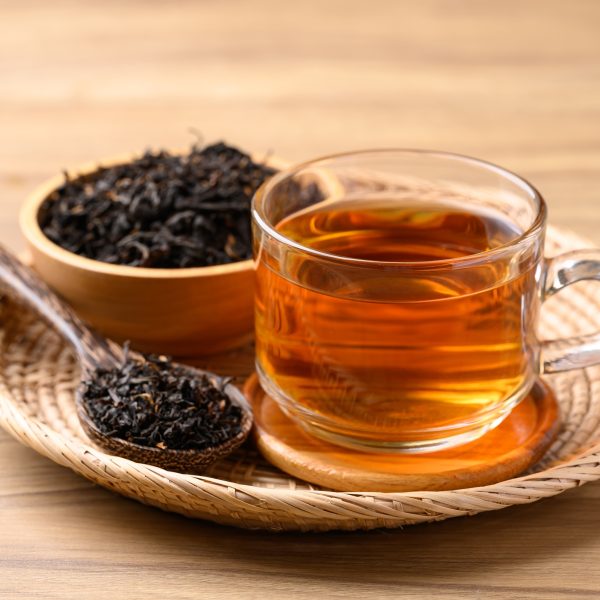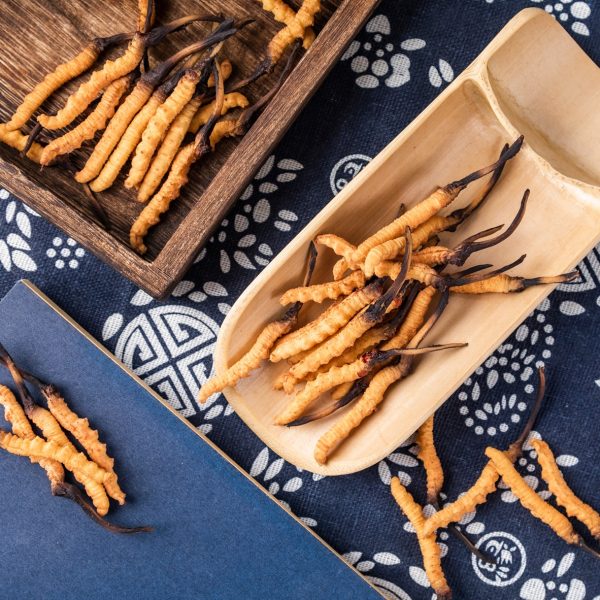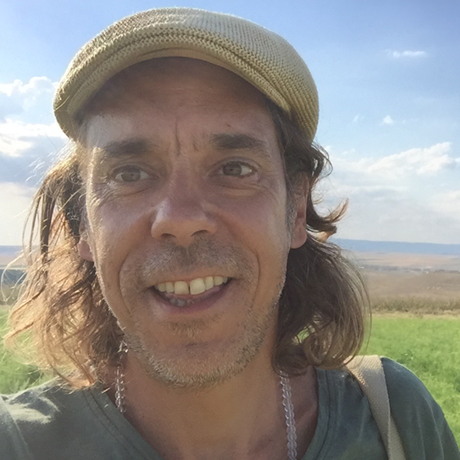Herbalist Sebastian Pole explores what’s in a traditional Chinese herbal formulation.

In Traditional Chinese Medicine, a formula is known as fang ji. This saying combines the meaning behind the creativity and the creation of a herbal prescription. ‘Fang’ is the actual paper the formula is written on, ‘ji’ is the practice of formula creation and administration itself. In TCM, understanding the classical formulae is as essential as understanding the theory, the treatment strategy and the individual herbs themselves (this package is known as (li fa fang yao). It is a perfectly logical approach to help guide the practitioner in pursuit of a successful clinical outcome.
The first job in creating a formula is to differentiate the root causes from the manifesting signs and symptom branches of an illness. TCM practitioners are always seeking to determine what is the ben – the root – and what is the biao – the branch. Simply put, you treat the manifestations of illness in acute disease and you treat the root patterns in a chronic syndrome, though of course, clinical necessity means you are often treating both root and branch at the same time. As TCM is not primarily disease orientated but more strategy orientated, this leads to what is probably one of the most insightful dictats in traditional medicine:
‘Yi bing tong zi, Tong bing yi zi’
‘One disease has different treatments,
Different diseases have the same treatment’.
This is entirely obvious and basic in clinical experience; for example, one person’s upset tummy is not the same as another’s. Whether you call it IBS, Crohn’s or Ulcerative colitis, from a TCM perspective the patterns can include various configurations of heat-cold-wind-damp. Get it wrong at your patient’s peril. Conversely a well-known formula such as Si wu tang; including Dang gui (Angelica sinenis), Bai shao yao (Peonia lactiflora), Chuan xiong (Ligusticum chinensis), Gan cao, (Glycyrrhiza uralensis) can be used for a range of diseases such as anemia, amenorrhoea, constipation, dry skin or insomnia.
Chinese treatment strategy
Along with viewing whether a disease is mainly influenced by the interior or the exterior, hot or cold, excess or deficiency, yin or yang, TCM physicians use eight treatment methods (ba fa):
- Sweating (han fa) ‘When it is at the level of the skin, use sweating to discharge it!’
- Vomiting (tu fa) ‘When it is at the upper level, draw it up and out’ – (rarely used today)
- Draining downwards (xia fa) ‘When it is at the lower level, lead and draw it down’
- Harmonising (he fa) a broad category used to integrate and bring a formula together.’
- Warming (wen fa) ‘Warm that which is cold.’
- Clearing (qing fa) ‘Clear that which is warm…treat hot with cold.’
- Reducing (xiao fa) ‘Pare away that which is firm, disperse that which is clumped.’
- Tonify (bu fa) ‘Tonify that which is deficient. Augment that which is injured.’
(References from the Inner Classic)

The herbalist is guided by what herbs to choose by linking the taste of a herb with its temperature qualities; a bitter-cooling herb will clear heat and drain damp, an acrid-warming one will disperse cold. As medical insight evolved, this knowledge of how herbs work developed into a further classification within Chinese herbalism of how to most usefully combine herbs; to mutually accentuate and enhance benefits as well as avoid antagonising or counteracting any intended actions. And this insight created a map for making a formula.
The pattern of formula construction commonly taught in Chinese herbal medicine is guided by the hierarchical concept of assigning a Leader, a Deputy, an Assistant, an Envoy. Traditionally these were couched in the cultural world of monarchs, rulers and class ranking. It’s the practice of synergy in action.
Select the lead herb, or herbs, that act like the Leader in charge. These should be delivering the strongest and most specific effect on the presenting pattern.
Then you should support those leading herbs with some help from the Deputy; herbs that are specific but perhaps at a lower dose than the primary Leaders. The Deputy may also be of primary focus for a secondary yet concomitant pattern.
Next you need to bring in the Assistant. Like all leaders and deputies, they may need some support in implementation. And they may need help in mitigating any extremes in the other herbs (too hot, too cold, potential toxicity).
The Envoy acts as a messenger herb helping to both guide the formula to a specific system in the body as well as smooth the journey, acting as a so-called ‘harmoniser’ to the formula.
And like all recipes, the classical formulae are really ‘ideas’ from which clinicians can take inspiration and shape to the needs of their client; by adding or subtracting species specific to the presenting pattern, adjusting the dose, modifying the form the prescription is consumed in (tea, pill etc).
Chinese herbal medicine formula review
TCM has thousands of classical formulae that are used as such templates; they are added to, subtracted from, mixed together – all with the intent of refining what is appropriate to each individual.
A widely-used formula is Xiao Yao Wan, The Free and Easy Wanderer:
| Chinese name | Common name | |
|---|---|---|
| Chai Hu | Bupleurum | 9g Leader |
| Dang Gui | Angelica | 9g Leader |
| Bai Shao Yao | White peony | 9g Deputy |
| Bai Zhu | White atractylodes | 9g Deputy |
| Fu Ling | Poria | 9g Assistant |
| Bo He | Mentha | 3g Envoy |
| Zhi Gan Cao | Honey-roasted licorice | 3g Envoy |
| Wei Jiang | Roasted fresh ginger | 3g Envoy |
Decocted in 500ml for 30mins and taken warm 2x/day over 2 days.

Together the formula spreads Liver Qi, strengthens the Spleen, and nourishes the Blood and is used for anxiety, tension, depression, pre-menstrual syndromes.
Chai Hu and Bo He are like the light breeze and sunshine in the morning, Spreading the Qi and opening the channels.
Bai Shao Yao protects Liver Blood and works with Dang Gui to build Fluids.
Bai Zhu works with Spleen; a strong Spleen makes good Blood. Bai Zhu supplements Dang Gui’s ability to nourish Blood.
If the Sheng Jiang is roasted it protects the Middle Jiao and Spleen better.
Zhi Gan Cao harmonises the formula and tonifies the Spleen.
A Chinese herbalist will use this recipe as a basis from which to personalise the formula by emphasising various aspects as needed; more Blood tonics to build Blood, more Qi regulators to move Qi, Shen quietening herbs to alleviate distress, Spleen Qi tonics to help digestion etc. It’s the poetry of herbalism in action.
Chinese herbal classifications
- Release the Exterior (warm, acrid herbs)
- Release the Exterior (cool, acrid herbs)
- Drain Fire
- Cool the Blood
- Clear Heat and Relieve Toxicity
- Purgatives
- Cathartics
- Drain Dampness
- Dispel Wind-Damp
- Cool and Transform Phlegm-Heat
- Warm and Transform Phlegm-Cold
- Treat Cough & Wheezing
- Aromatically Transform Damp
- Regulate the Qi
- Stop Bleeding
- Invigorate the Blood
- Warm the Interior and Expel Cold
- Tonify the Qi
- Tonify the Blood
- Tonify the Yang
- Tonify the Yin
- Stabilize and Bind (astringents)
- Nourish the Heart and Calm the Spirit
- Aromatically clear the Orifices of the Heart
- Extinguish Wind and Stop Tremors
- Expel Parasites
References and further reading
You can find more about Traditional Chinese Herbal Medicine on our TCM herbalism page.
- Ayurvedic Pharmacopoeia of India, Government of India, 2001, India
- Bartram, T, Encyclopedia of herbal medicine, Grace Publishers, 1995, UK
- Bensky, D and Gamble, A, Chinese herbal medicine: Materia medica, Eastland Press, 1989, USA
- Bensky, D and Gamble, A, Chinese herbal medicine: Formulas & Strategies Eastland Press, 1993, USA
- Bhishagratna, K, Susruta Samhita, Chowkhamba Press, 1996, India
- Bone, K, Clinical applications of Ayurvedic and Chinese herbs, Phytotherapy Press, 1996, Australia
- Bone, K, A Clinical guide to blending liquid herbs, Churchill Livingstone, 2003, UK
- Bone, K and Mills S, The principles and practice of phytotherapy, 2nd edition Churchill Livingstone, 2013, UK
- British Herbal Medicine Association, British Herbal Compendium, BHMA, Vols 1 and 2, 1992, 2006, UK
- British Herbal Medicine Association, British Herbal Pharmacopoeia. BHMA, 1983, UK
- Che, Chun-Tao & Wang, Zhi & Chow, Moses & Lam, Christopher. (2013). Herb-Herb Combination for Therapeutic Enhancement and Advancement: Theory, Practice and Future Perspectives. Molecules (Basel, Switzerland). 18. 5125-41. 10.3390/molecules18055125.
- Chen J and Chen T, Chinese medical herbology and pharmacology, Art of medicine press 2004, USA
- Dash, B, Fundamentals of Ayurvedic medicine, Konark Publishers, 1978, India
- Dash, B, Materia medica of Ayurveda, Jain Publishers, 1991, India
- Dash, B and Sharma, R, Charaka Samhita, Chowkhamba Press, 1996, India
- Dwarkanath, C, Introduction to Kayachikitsa, Chaukhambha press, 1996, India
- Ganora, L, Herbal Constituents, Foundations of Phytochemistry, 2019, USA
- Gogte, V, Ayurvedic pharmacology and therapeutic uses of medicinal plants, Bhavan’s Book University, 2000, India
- Govind das Vicharita, Bhaishajya Ratnavali, Motilal Banarsidas, 1997, India
- Hoffman, D, Medical herbalism, The science and practice of herbal medicine, Healing Arts Press, 2003, USA
- Kaptchuk, T, The web that has no weaver: understanding Chinese medicine, Congdon and Weed, 1983, USA
- Lad, V, Textbook of Ayurveda: Fundamental Principles, The Ayurvedic Press, 2002, India
- Lad, V, Textbook of Ayurveda: General Principles of Management and Treatment, 2012, The Ayurvedic Press, 2002, India
- Maclean, W and Lyttleton, J, Clinical handbook of internal medicine, Volume 1& 2, University of Western Sydney, 2002, Australia
- Meulenbeld, G, The Madhava Nidana and its chief commentary: chapters 1-10, Leiden and Brill, 1974, Holland
- Meulenbeld, G, Reflectons on the basic concepts of Indian pharmacology, in studies on Indian medical history edited by G Meulenbeld and D Wujastyk, Forsten, 1987, Holland
- Meulenbeld, G, A history of Sanskrit medical literature, Egbert Forsten. 2001, Holland
- Mills, S, The essential book of herbal medicine, Penguin Arkana, 1991, UK
- Murthy, P, Sarangadhara Samhita, Chowkhamba Press, 2001, India
- Murthy, S, Vagbhata’s Astanga Hridayam, Krishnadas Academy, 1991-1995, India
- Murthy, S, Madhava Nidana (Roga viniscaya) of Madhavakara, Chaukambha Orientalia, 1995, India
- Murthy, S, Sarangadhara Samhita, Chaukhamba Orientalia, 1995, India
- Murthy, S, Bhavaprakasha of Bhavamisra, Krishnadas Academy, 2001, India
- Nadkarni, A, Indian materia medica, Popular Prakashan, 1954, India
- Namjoshi, A et al, The Ayurvedic formulary of India, Government of India Press, 1978, , India
- Paranjpe, P, Indian medicinal plants: forgotten healers, Chaukhamba Sanskrit Pratishthan, 2001, India
- Paranjpe, P, Ayurvedic medicine, the living tradition, a guide to Ayurvedic generic formulations Chaukhamba Sanskrit Pratishthan, 2003, India
- Rang, H, Dale, M, and Ritter, J, Pharmacology, Churchill Livingstone, 1999, UK
- Reddy, R, Bhaisajya kalpana vijnanam, Chaukhambha Sanskrit Bhavan, 2001, India
- Sexena, N, Yogaratnakara, Chaukhambha Orientalia, 1995, , India
- Sharma, P, Cakradatta: a treatise on the principles and practices of Ayurvedic medicine, Chaukhamba Publishers, 1998, , India
- Svoboda, R, Prakruti: Your Ayurvedic constitution, Geocom, 1988, USA
- Svoboda, R, Ayurveda: life, health and longevity, Penguin/ Arkana, 1992, India
- Svoboda, R and Lade, A, Tao and Dharma, Lotus Press, 1995, USA
- Tierra, M, Planetary herbology, Lotus Press, 1992, USA
- Tillotson, A, The one earth herbal sourcebook, Twin Streams, 2001, USA
- Tirtha, S, The Ayurveda encyclopedia, Ayurvedic Centre Holistic Press, 1998, USA
- Trease and Evans, Pharmacognosy 16th edition, Harcourt 2009, UK
- Tobyn, G, Culpepper’s medicine: a practice of holistic medicine, Element, 1997, UK
- Williamson, E, Major herbs of Ayurveda, Churchill Livingstone, 2002 (Williamson 1), UK
- Zhou, Xian & Seto, Sai Wang & Chang, Dennis & Kiat, Hosen & Razmovski-Naumovski, Valentina & Chan, Kelvin & Bensoussan, Alan. (2016). Synergistic Effects of Chinese Herbal Medicine: A Comprehensive Review of Methodology and Current Research. Frontiers in Pharmacology. 7. 201. 10.3389/fphar.2016.00201.

